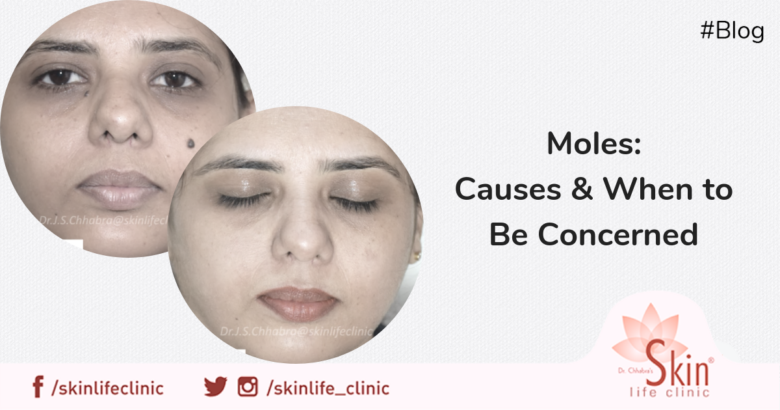While for a considerable lot of us moles are simply darker spots on our body we may not give careful consideration to, they come in different shapes, sizes, and structures that can reveal to us vital things about our skin wellbeing.
What Is A Mole?
Moles are growths on the skin that are typically brown or black. Moles can show up anyplace on the skin, alone or in gatherings.
What Causes A Mole?
Moles occur when cells in the skin grow in a group as opposed to being spread all through the skin. These cells are called melanocytes, and they make the pigment that gives skin its natural shading. Moles may darken after exposure to the sun, amid the teenage years, and during pregnancy.
Types of Skin Moles
If you have a mole, you might think about whether it’s innocuous or on the off chance that you should see your specialist about it. Depending on its appearance and when it developed, a mole can be named one of the accompanying sorts:
- Congenital moles – When a mole is present at birth, it is called a congenital mole. About 1% of individuals have congenital moles, and these moles may be at increased risk of transforming into skin cancer.
- Acquired moles – Acquired moles represent most moles and more often than not create amid youth or early adulthood. These moles are typically littler than a quarter inch and are thought to be due to excessive sun exposure. Most acquired moles will not develop into skin cancer.
- Atypical moles – Atypical moles are shaped irregularly. These moles are typically uneven in color, with a dark brown center. Atypical moles tend to run in families and they may be at increased risk of transforming into skin cancer.
When To Be Concerned And See A Dermatologist?
It’s essential to consult a dermatologist about a suspicious skin mole since it might be an early indication of dangerous melanoma, which is a hazardous type of skin cancer.
Pay special attention to areas of the skin that are often exposed to the sun, such as the hands, arms, chest, neck, face, ears, legs, and back.
If a mole does not change over time, there is little reason for concern. If you see any indications of change in a current mole, if you have a new mole, or if you want a mole to be removed for cosmetic reasons, talk to your dermatologist.
Schedule An Appointment
Most moles are harmless and do not need to be removed. But if your dermatologist thinks your mole looks suspicious, or if you would like to have the mole removed, it can usually be done quite easily.
To get your mole removed, consider Mole Removal Treatment at Dr. Chhabra’s Skinlife Clinic. To learn more about the mole treatment, schedule a free consultation at Dr. Chhabra’s Skinlife Clinic or call us at +91-99265-80465.


Leave a Comment